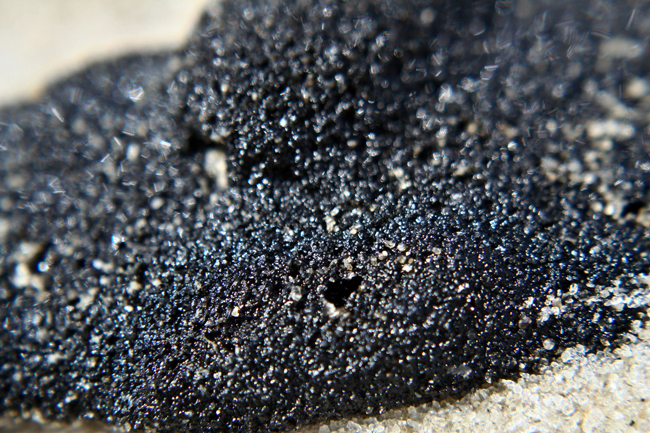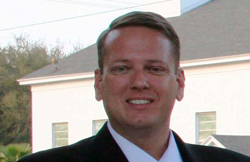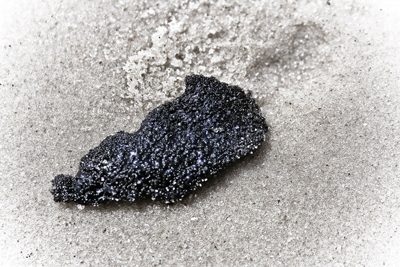
Think of it as hurricane preparation. Instead of wind, it’s oil. Instead of property damage, it’s contamination of the beaches. Instead of locals looking to evacuate, it’s tourists opting out of visiting. Instead of loss of life or limb, it’s the potential loss of millions, and for the state possibly billions, of dollars in tourism and sales tax revenue, with impacts rippling across every government and many private sector budgets. Wildlife will suffer, too. There may be unforseen impacts. There usually are with calamities of this size, and this one is not localized to the the Gulf of Mexico. As Troy Harper describes it, it’s a spill of regional, “state and national significance.”
What happens in Escambia County will affect Flagler County, even if the BP oil slick, which may become the largest oil spill in history by the time it’s done, never reaches here. Harper, Flagler County’s director of emergency services, puts the chance of the slick reaching Flagler shores at less than 5 percent. But he’s not taking chances, especially if the weather turns and a tropical storm or a hurricane combines with oil sloshing even far out to sea. If that happens, “all bets are off.”
Click On:
- Flagler County Emergency Services
- NOAA’s Emergency Response Page
- We Need Drilling. Just Not Where You Think.
- Beach Contamination Hotline in Flagler: 386/313-4222.
So Harper is readying Flagler County’s response as if he were preparing for a hurricane.
Beginning today, the county put out a Beach Contamination Hotline for residents to call in case they spot tar balls or other oil-related contaminants on the beach. (The hotline: 386/313-4222.) The hotline may be premature, Harper says. But he’d rather have it be premature than late.
It’s Harper’s strategy across the board. Any possibility of oil hitting Flagler beaches is not before early June. “Even if it made a direct beeline for Flagler County, it’s still two weeks or so away,” Harper says. But next week, Harper and the county’s Emergency Services Department will lead a series of meetings with public, elected, environmental and emergency authorities, along with hoteliers and business interests, to map out what’s known so far, what can be done now, and what the county’s and state’s response will be should oil lap at local beaches.

First, nothing has changed on local beaches. “It’s business as normal,” Harper says. “Continue to enjoy the beaches, continue to enjoy the activities, continue to monitor the media.” The county, local chambers of commerce and the Tourism Development Council may look to join the statewide marketing campaign to counter the perception—already taking hold abroad and in the rest of the country—that Florida beaches are slickening up. BP contributed $25 million to underwrite Florida’s tourism campaign (a sum as scandalously small as BP’s eventual damage will be colossal. But it won’t be Florida’s, or Flagler’s, only recourse).
Second, the county is not yet looking for volunteers to storm the beaches. The tar balls haven’t appeared, of course. Even if they do, Harper says it won’t be as simple as sending out well-meaning beach-lovers on oil patrol. “If we become impacted in any fashion, we don’t want citizens going down to the beach just picking up tar balls and throwing them in the trash cans around the dunes. We need to be able to track all the incidents of contamination, beach contamination and wildlife contamination.”
Next week emergency and environmental authorities will decide when to do what other counties in north and west Florida are either doing or planning: “One of the key elements here is establishing a baseline environmentally for water, beach and soil so we have something to compare it to if we have any contaminants, in case of litigation against BP,” Harper said. If tar balls begin to show up, the county will have trained individuals in how to deal with the stuff so it’s analyzed and disposed of properly. That’s part of next week’s planning, too.
Third, the county will coordinate an ongoing education and information campaign to keep the public and government agencies as closely informed as possible to the vagaries of the oil slick—where it is and when it might hit. The problem in that case is the slick’s unpredictability. Little can be said about the slick’s direction past 24 hours or 48 hours in the future. In that sense, it’s also like a hurricane’s path. The cone gets larger with time and geography.

Fortunately for Flagler County, unfortunately for counties in western and northern Florida, especially toward the Panhandle, Flagler will have plenty of time to watch and learn as other counties experience the disaster first. This, too, is relatively certain: Should the oil hit Flagler beaches, it won’t be in proportions anywhere near as calamitous as it will in Louisiana, Alabama and northern Florida. But even lesser amounts of tar balls on the beaches can still have a devastating psychological effect on perceptions and tourism. That’s what Flagler will have to contend with.
Meanwhile, here’s the emergency-planning lineup for next week:
Tuesday, May 25 at 3 p.m. at the county’s Emergency Operations Center: County emergency services will lead a meeting with all the county’s elected officials, including city commissioners, constitutional officers, mayors, school board members and county commissioners. The meeting is designed to bring everyone up to speed on the county’s plans. For those officials who can’t make that meeting, emergency services will lead a second, similar meeting Wednesday, May 26, at 9 a.m.
Thursday, May 27, at 9 a.m. at EOC: Emergency services will meet with the county’s Tourism Development Council and the county’s hoteliers and other members of the hospitality industry, plus the chambers of commerce. (Also at the EOC.)
Thursday at 1 p.m. at EOC: Emergency services will hold a pre-planning meting with environmental planners from Palm Coast and the county, the state Department of Environmental Protection (which is the lead agency in Florida in coordinating the state-level response to the oil slick), and members of the Guana Tolomato Matanzas National Estuarine Research Reserve
For all that, the message now to the public at large is: don’t panic unnecessarily, don’t blow the slick’s effects locally out of proportion—however difficult is is not to be overwhelmed by its disastrous proportions in the Gulf. One incident this week was indicative of the anxiety: tar balls were discovered on some Florida beaches, triggering a run on emergency calls, including in Flagler County, where television stations called with great anticipation. The tar balls were turned out to be the routine run-off from illegal dumping by ships or minor spillage offshore that washes up to the beaches from time to time. Tar balls like that are found on Flagler beaches, too. In sum, not all tar balls have the same disastrous origins.





























Atilla says
this is the price we and BP will pay for being lazy and stupid for not developing and implementing alternative energy sources since the oil embargo in the 1970’s. If we had only heeded the warning of our vulnerability. Instead we got fat happy and lazy on a diet of cheap (compared to some alternatives) oil. Shame on us all
Jim R. says
This is why that oil will never stop flowing .
http://www.semp.us/publications/biot_reader.php?BiotID=182
orlando seo says
Great read! However, I had a difficult time viewing your post in Safari 5. Just wanted to bring that to your attention! Best regards.